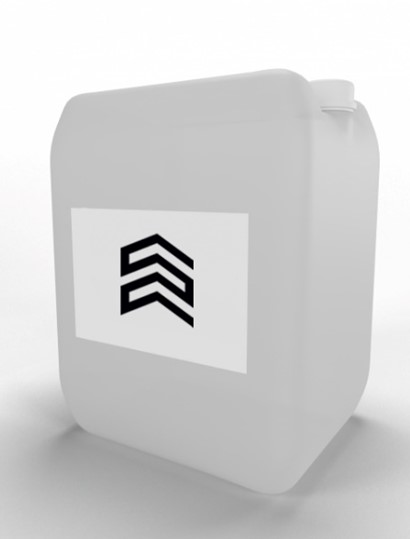VkusVill unveiled an updated pelmeni design with regional patterns.

Regional dumplings—whether Altai, Kalmyk, or Balkarian—have long been a favorite among customers. However, with growing interest in local cuisines and domestic tourism, VkusVill faced the need to make product selection even more intuitive and emotionally satisfying for customers.
On the one hand, the goal of design is to help users quickly navigate the wide selection. On the other, it is to create a vibrant, memorable image that conveys the richness of Russia's cultural heritage.
The design process began with a search for meaning. The internal design team proposed three concepts: an illustrative one (with animals and plants), a stylized ornament, and a third—unusual, rich graphics—which was ultimately chosen for implementation.
"Every region is unique, with its own history, people, nature, and traditions," says Inessa Mitrozor, designer at VkusVill. "We wanted to convey this diversity through details: embroidery elements, mountain and river silhouettes, and the textures of traditional rugs. The result is a collective image of the region, imbued with symbols and meanings."
Particular attention was paid to the color palette: the main shade of each package corresponds to the MEAT inside—beef, chicken , pork , or red deer . This helps customers immediately choose the flavor.
One of the main challenges was the question of "locality." We wanted to clearly tie the product to a specific region, but production and logistical constraints currently prevent this. Therefore, the line includes both truly local products, produced in the Altai Krai, and those prepared in Moscow, but using regional recipes.
Nevertheless, VkusVill remains true to its goal of telling the stories of regions through food and design.
"The most difficult stage was drawing all the elements. The pattern turned out very rich, and it was important to maintain its integrity. Every small detail should contribute to the overall image and not distract from the eye.
"All elements were hand-drawn, based on real clothing samples, household items, and patterns. We strived to ensure that every texture and shape evoked something familiar and homely, but in a new way," says Inessa Mitrozor, designer at VkusVill.
National costumes and carpets served as the primary references. They provided the shape, colors, and structure of the patterns. The team didn't strive for an exact reproduction of ethnic motifs, but wanted to preserve the spirit of these traditions.
Currently, only the "Altai" pelmeni, available throughout the chain, feature the new design. The rest of the line will gradually transition to the updated packaging over the summer.
All design elements were created by hand, without the use of neural networks. The creators are convinced that only humans can convey the soul and warmth of traditions that make food truly special.
Read together with it:
- Progress Agro presented two cloned calves in the Krasnodar region.According to Sergey Yakovenko, HEAD of the Altragene laboratory, large fetuses are a common problem in cloning, and researchers are continuing to work to reduce this risk. Previously, culture media containing bovine serum containing growth factors could contribute to increased calf weight. Now, a synthetic medium is being used, which has shown positive results. All newbornsThe calves were manually...
- Эксперт прогнозирует резкое увеличение цен на куриное мясо до 50% к Новому годуПо его данным, это связано с удорожанием кормов и увеличением финансовой нагрузки на птицеводческие предприятия. Также он отметил влияние высоких тарифов на электроэнергию и логистику, а также возможные изменения налоговой политики, включая повышение НДС до 22%. Панченко добавил, что традиционно к Новому году наблюдается подорожание продуктов, но после праздников цены обычно корректируются..........
- Саратовская область ожидает снижения цен на куриное мясоОднако производство куриного мяса покрывает лишь 16% спроса. Для увеличения объёмов производства предусмотрены льготные кредиты на возведение птицефабрик и модернизацию существующих. Тем не менее, стоимость курятины продолжает расти. В сентябре средняя оптовая цена бройлера достигала 190 рублей за килограмм, тогда как в Саратовской области цена составила 218 рублей за килограмм. Эксперты объясняют...
- ФАО: мировые цены на продовольствие снижаются второй месяц подрядДжим Вайкофф Среднее значение Индекса цен на продовольствие ФАО в октябре составило 126,4 пункта, снизившись с пересмотренного значения в 128,5 пункта в сентябре, что представляет собой небольшое снижение в годовом исчислении и на 21,1% ниже пикового значения в марте 2022 года. Лидером снижения стал сахар: его субиндекс упал на 5,3% до самого низкого уровня с декабря 2......
- "Истинный полешук" Русый рассказал, как нарушил стиль работы на совещании у ПрезидентаМихаил Русый 18 ноября, Минск. Александр Лукашенко 18 ноября собрал совещание по темам развития районов Припятского Полесья и реализации соответствующей программы. Основным докладчиком на мероприятии выступил Михаил Русый - "истинный полешук", как назвал его Президент, уполномоченный представитель главы государства в Брестской области и председатель Постоянной комиссии по законодательству и госуда...
- Experts predict further increases in chicken and egg prices in Russia.Key factors driving price increases: Increasing VAT from 20% to 22% Increased feed costs due to crop failure in the regions Rising prices for fuel and energy resources Seasonal increase in the cost of keeping poultry in winter Expert forecasts: Financial analyst Tatyana Volkova expects chicken prices to rise 1......
- Основатель Wolt Мики Кууси: «Платите сотрудникам больше, чем они ожидают»К 35 годам Мики Кууси дважды попал в список FORBES, создал приложение доставки Wolt, которое продал за $8 млрд, превратил локальную конференцию Slush в один из крупнейших технологических форумов Европы. Вот каких принципов он придерживается «В жизни есть много вещей, которые нам просто приходится делать, например есть. И время — единственная валюта, которую мы не можем вернуть… Это не вопрос лени,...





























































